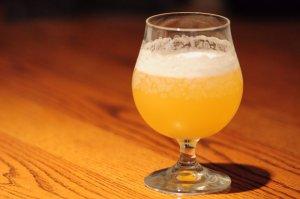 The power of sour is undeniable. For centuries, breweries have been making sour beers that range from mildly tart to toe-curling, tooth enamel-eating sour. Sour beers that go by names like gose (pronounced go-zah), lambic, Berliner Weiss and more are seeing a surge in popularity rivaled only by the IPA craze of the past few years. And, with the hot, humid summer months coming, you will see more and more of these thirst-quenching beers on local shelves.
The power of sour is undeniable. For centuries, breweries have been making sour beers that range from mildly tart to toe-curling, tooth enamel-eating sour. Sour beers that go by names like gose (pronounced go-zah), lambic, Berliner Weiss and more are seeing a surge in popularity rivaled only by the IPA craze of the past few years. And, with the hot, humid summer months coming, you will see more and more of these thirst-quenching beers on local shelves.
But, why do we humans have such a craving for sour things? It all goes back to biology. Sour tastes are generally associated with acids that are found in relatively few places when it comes to food. Somewhere in our evolutionary history, we lost the ability to synthesize vitamin C meaning that we had to get it from our environment in the form of food. Acids in the form of vitamin C are key nutrients in holding off a number of deadly conditions like scurvy and also help to build our immune systems. Since sour meant acid to our ancestors and that satisfied our body’s need for vitamin C, our collective physiology made us seek out acidic foods like citrus fruits.
Now that we have an idea why some of us are inclined to enjoy sour flavors, let’s take a look at how sour beer developed.
Before yeast was discovered in the late 1800’s, most beers were at least a little sour. This was because the role of yeast was not known to brewers and beer was usually brewed using open-topped fermentation vessels. Wild yeast “infected” the sugary pre-beer liquid known as wort and caused the magical process of fermentation to occur.
Once the properties of yeast were understood, breweries began to control the amount of sour flavors in their beers. Some breweries, particularly those in Belgium continued allowing their wort to “spontaneously ferment” by withholding yeast and allowing natural yeast to inoculate the liquid. From these breweries come beers such as gueuze, an intensely sour beer created from blending one, two and three year-old lambic ales.
Other sour styles such as German goze, are produced by intentionally adding yeast strains that add sour flavors to the finished beer. This style is also characterized by the addition of salt and coriander. Yet another style is Berliner Weiss a German wheat beer made with Lactobacillus bacteria and usually, but not always, served with flavored syrup. Yet another sour beer is Flanders Red named for the area of Belgium where it is made as well as the red color and sour flavor it obtains from the red wine barrels it is aged in.
Sour beers have emerged as one of the hot trends in craft beer today. You can look forward to more and more sour beer produced by craft brewers in the coming months and years.
Advertisements